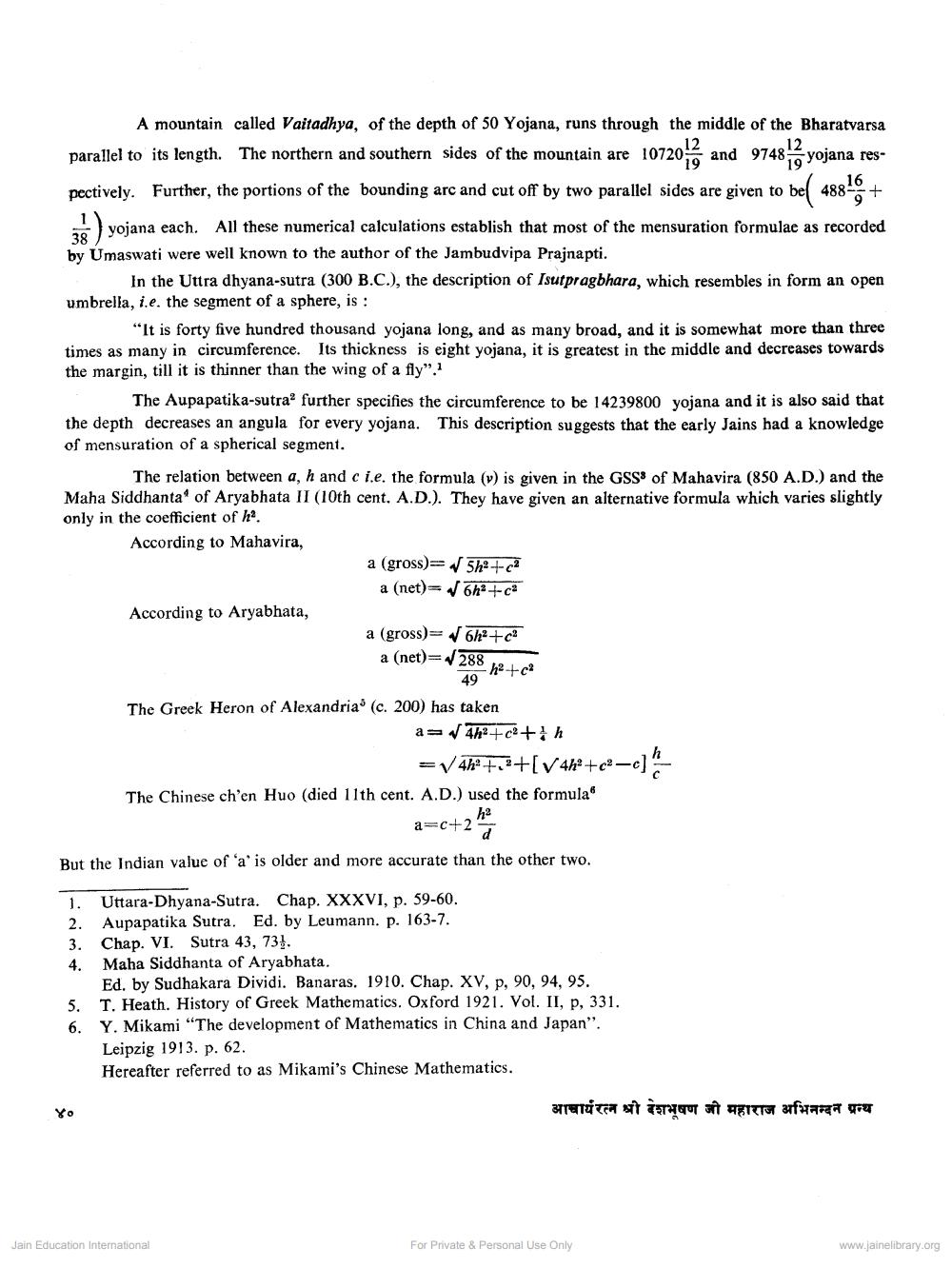________________
A mountain called Vaitadhya, of the depth of 50 Yojana, runs through the middle of the Bharatvarsa parallel to its length. The northern and southern sides of the mountain are
na respectively. Further, the portions of the bounding arc and cut off by two parallel sides are given to bel 488-8+
yojana each. All these numerical calculations establish that most of the mensuration formulae as recorded by Umaswati were well known to the author of the Jambudvipa Prajnapti.
In the Uttra dhyana-sutra (300 B.C.), the description of Isutpragbhara, which resembles in form an open umbrella, i.e. the segment of a sphere, is :
"It is forty five hundred thousand yojana long, and as many broad, and it is somewhat more than three times as many in circumference. Its thickness is eight yojana, it is greatest in the middle and decreases towards the margin, till it is thinner than the wing of a fly".1
The Aupapatika-sutra' further specifies the circumference to be 14239800 yojana and it is also said that the depth decreases an angula for every yojana. This description suggests that the early Jains had a knowledge of mensuration of a spherical segment.
The relation between a, h and c i.e. the formula (v) is given in the GSS of Mahavira (850 A.D.) and the Maha Siddhanta of Aryabhata II (10th cent. A.D.). They have given an alternative formula which varies slightly only in the coefficient of h. According to Mahavira,
a (gross)= 5h+c?
a (net)=76h2+ca According to Aryabhata,
a (gross)= 6h2 +c?
a (net)=288 21
49
The Greek Heron of Alexandria (c. 200) has taken
a= v 4h2+c2+ih
=V 4h +23+1 V 4h+c2-c15 The Chinese ch'en Huo (died 11th cent. A.D.) used the formula
a=c+2 But the Indian value of 'a' is older and more accurate than the other two.
1. Uttara-Dhyana-Sutra. Chap. XXXVI, p. 59-60. 2. Aupapatika Sutra. Ed. by Leumann. p. 163-7. 3. Chap. VI. Sutra 43, 73!.
Maha Siddhanta of Aryabhata.
Ed. by Sudhakara Dividi. Banaras. 1910. Chap. XV, P, 90, 94, 95. 5. T. Heath. History of Greek Mathematics. Oxford 1921. Vol. II, p. 331. 6. Y. Mikami "The development of Mathematics in China and Japan".
Leipzig 1913. p. 62. Hereafter referred to as Mikami's Chinese Mathematics.
आचार्यरत्न श्री देशभूषण जी महाराज अभिनन्दन प्रन्थ
Jain Education International
For Private & Personal Use Only
www.jainelibrary.org




